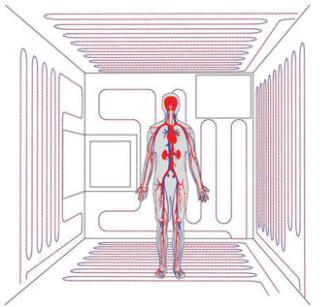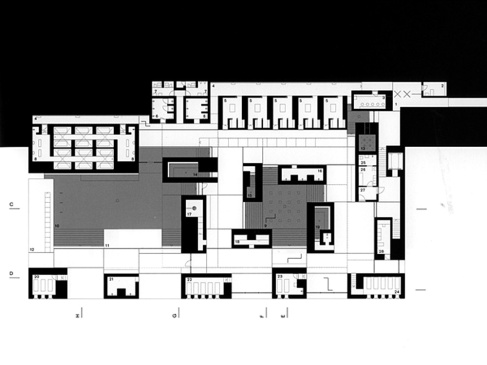In “Thermally Active Surfaces In Architecture,” Moe discusses at length the different methods that are available to heat and cool a living space with varying levels of energy efficiency. A perfect system, he believes, would be a room in which all six surrounding surfaces were equipped with hydronic climate control systems so that the space is managed evenly and optimal comfort levels are reached for the inhabitants. However, as these systems rely on the usage of massive materials such as concrete, they are often impossible to create perfectly with the popularity of large windows, multi-story spaces, and other programatic elements that make efficient heating and cooling difficult. Consequentially, all of the excellent arguments that Moe makes in favor of thermally active surfaces are only optimally effective in regular, rectilinear spaces. Beyond that, Moe makes no mention of how this change in efficiency would compare to traditional HVAC systems. Thermally active material systems would assumedly still require less energy and be more effective due to their usage of water instead of air, but there are few specifics in this text that point to Moes conclusions.
Above: Architectural plan of Peter Zumthors Bregenz Kunsthaus in Bregenz, Austria. The structures usage of massive concrete walls and pools of water provide excellent usage of thermally active materials that can adequately control the buildings temperature and humidity levels.
In the example of Zumthors Kunsthaus, the thermally active material system is implemented to perfection as the pools of water necessary for a bath house behave just as the hydronic systems running throughout the structures concrete walls. Heating both the water and the concrete, coupled with the buildings fairly open floor plan, essentially turns the entire interior into a single space that is heated and cooled by the same system of radiantly transferring energy through materials to the human body. In addition to these systems, the buildings position in the mountainside and structural support system extending into the cool earth provides it with an inherently stable climate condition, as the enormous heat sink of the surrounding ground prevents the interior of the building from major fluctuations in temperature. However, this condition also presents the necessity of insulating the warm baths from the cold earth that is piled against the interior walls just meters away. Again the massive concrete wall structures provide much of the needed insulation, and the usage of multiple climate zones in the building would allow some thermally active materials to heat where needed, and others to cool at the same time.


